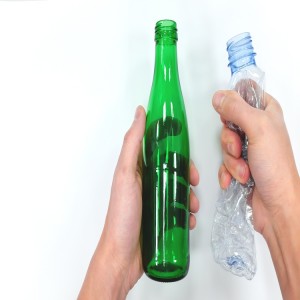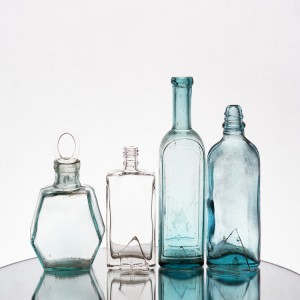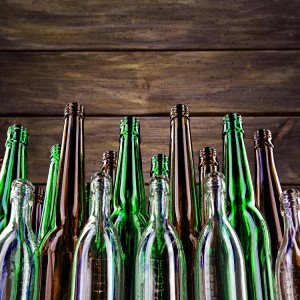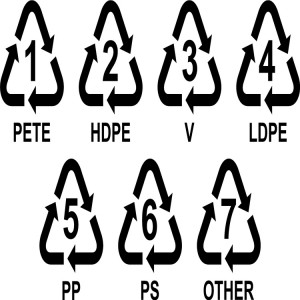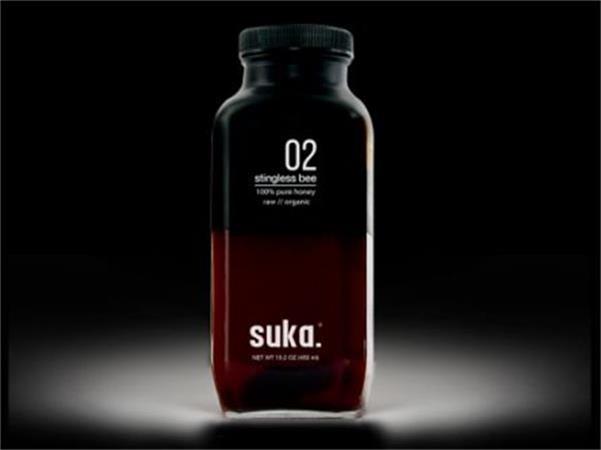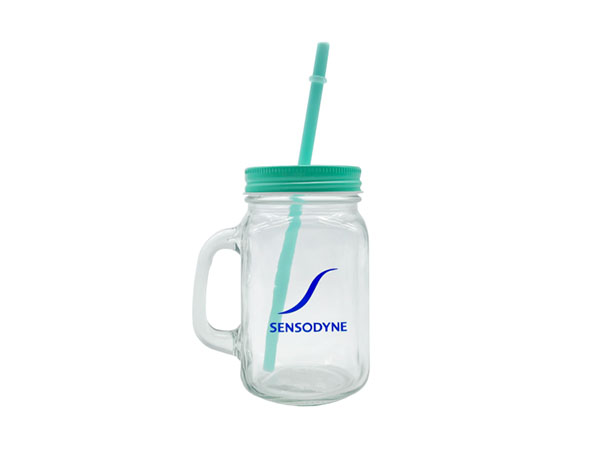Glass or plastic, which one is actually better for our environment? Well, we are going to explain glass vs plastic so you can make an informed decision on which one to use.
It’s no secret that there are lots of factories making new glass bottles, jars, and so much more every day. Plus, there are just as many factories making plastic too. We are going to break it down for you and answer your questions like can glass be recycled, is glass biodegradable, and is plastic a natural resource.
Glass vs Plastic
When you look up zero waste, you’re bound to notice tons and tons of pictures of glass jars everywhere. From the trash jar to the jars lining our pantries, glass is pretty popular in the zero waste community.
But what’s our obsession with glass? Is it really so much better for the environment than plastic? Is glass biodegradable or eco-friendly?
Plastic tends to get a really bad rep from environmentalists – that’s got a lot to do with the fact only 9 percent of it is recycled. That said, there’s so much more to think about in terms of what goes into manufacturing and recycling both glass and plastic, not to mention its afterlife.
Which is truly the eco-friendliest choice when you get down to it, glass or plastic? Well, perhaps the answer isn’t as clear cut as you may think. Is glass or plastic more environmentally friendly?
Glass:
Let’s start by analyzing every zero waster’s beloved material: Glass. First, it’s important to note that glass is endlessly recyclable, back to its original use.
It never loses its quality and purity, no matter how many times it’s recycled…. but is it actually being recycled?
The truth about glass
First up, making new glass requires sand. While we have tons of sand on beaches, deserts, and under the ocean, we’re using it faster than the planet can replenish it.
We use sand more than we use oil, and only a specific kind of sand can be used to get the job done (no, desert sand can’t be used). Here are some more concerning issues:
- Mostly, sand is harvested from riverbeds and sea beds.
- Taking sand out of the natural environment also disrupts the ecosystem, considering microorganisms live on it which feed the base of the food chain.
- Removing sand from the seabed leaves shore communities open to flooding and erosion.
Since we need sand to create new glass, you can see where this would be an issue.
More problems with glass
Another problem with glass? Glass is heavier than plastic, and breaks much easier during transit.
This means it produces more emissions in transportation than plastic and costs more to transport.
Can glass be recycled?
Yet another thing to consider is most glass isn’t actually recycled. In fact, only 33 percent of waste glass is recycled in America.
When you consider 10 million metric tons of glass is disposed of every year in America, that’s not a very high recycling rate. But why is recycling so low? Here are a few reasons:
- There are many reasons glass recycling is so low: Glass put into the recycling bin is used as a cheap landfill cover to keep costs low.
- Consumers participating in “wish-cycling” where they toss non-recyclables into the recycling bin and contaminate the entire bin.
- Colored glass can only be recycled and melted down with like-colors.
- Windows and Pyrex bakeware are not recyclable because of the way it’s manufactured to withstand high temperatures.
Is glass biodegradable?
Last but not least, glass takes one million years to decompose in the environment, perhaps even more in a landfill.
In total, that’s about four major problems with glass that impact the environment.
Now, let’s analyze the lifecycle of glass bit closer.
How glass is made:
Glass is made from all-natural resources, such as sand, soda ash, limestone and recycled glass.
However, it is important to note that we’re running out of the sand that’s used to make glass in the first place.
Worldwide, we go through 50 billion ton of sand every year. That is twice the amount produced by every river in the world.
Once these raw materials are harvested, they’re transported to a batch house where they are inspected and then sent to the furnace for melting, where they’re heated to 2600 to 2800 degrees Fahrenheit.
Afterwards, they go through conditioning, forming, and the finishing process before becoming the final product.
Once the final product is created, it’s transported so it can be washed and sterilized, then transported again to stores for sale or use.
Once it comes to its end of life, it’s (hopefully) collected and recycled.
Unfortunately, each year only one-third of the roughly 10 million metric tons of glass that Americans throw away is recycled.
The rest goes to a landfill.
When glass is collected and recycled, it has to begin this process of being transported, going through batch preparation, and everything else that follows again.
Emissions + energy:
As you can imagine, this entire process of making glass, especially using virgin materials, takes up a lot of time, energy, and resources.
Also, the amount of transporting the glass has to go through adds up, too, creating more emissions in the long run.
A lot of the furnaces used to create glass also run on fossil fuels, thus creating a lot of pollution.
The total fossil fuel energy consumed to make glass in North America, primary energy demand (PED), averaged to 16.6 megajoule(MJ) per 1 kilogram (kg) of container glass produced.
The global warming potential (GWP), aka climate change, averaged to 1.25 MJ per 1 kg of container glass produced.
These numbers encompass every stage of the packaging life cycle for glass.
If you’re wondering, a megajoule (MJ) is a unit of energy equivalent to one million joules.
A property’s gas usage is measured in megajoules and is recorded using a gas meter.
To put the carbon footprint measurements I gave into perspective a little better, 1 liter of gasoline is equal to 34.8 megajoules, High Heating Value (HHV).
In other words, it takes less than a liter of gasoline to make 1 kg of glass.
Recycling rates:
If a glass manufacturing facility used 50 percent recycled content to make new glass, then there would be a 10 percent decrease in GWP.
In other words, the 50 percent recycle rate would remove 2.2 million metric tons of CO2 from the environment.
That’s the equivalent of removing CO2 emissions of nearly 400,000 cars every year.
However, this would only happen assuming at least 50 percent of glass was recycled properly and used to make new glass.
Currently, only 40 percent of glass thrown into single-stream recycling collections actually gets recycled.
While glass is completely recyclable, unfortunately, there are certain facilities that choose to crush the glass and use it as a landfill cover instead.
This is cheaper than actually recycling the glass, or finding another cover material for landfills. Cover material for landfills are a mix of organic, inorganic and inert components (such as glass).
Glass as a landfill cover?
Landfill covers are used to control the offensive smells landfills give off, deter pests, prevent waste fires, discourage scavenging, and limit rainwater runoff.
Unfortunately, using glass to cover landfills doesn’t help the environment or reduce emissions because it’s essentially down cycling glass and preventing it from being reused.
Make sure you look into your local recycling laws before you recycle glass, just to double check it’ll actually be recycled.
Glass recycling is a closed-loop system, so it doesn’t create any additional waste or by-products.
End of life:
You’re probably better off holding onto glass and repurposing it before you toss it into the recycling bin. Here are a few reasons why:
- Glass takes a very, very long time to break down. In fact, it can take a glass bottle one million years to decompose in the environment, possibly even more if it’s in a landfill.
- Because its life cycle is so long, and because glass doesn’t leach any chemicals, it’s better to repurpose and reuse it over and over again before recycling it.
- Because glass is nonporous and impermeable, there are no interactions between glass packaging and the products inside, resulting in no nasty after taste – ever.
- Plus, glass has an almost zero rate of chemical interactions, which ensures that the products inside a glass bottle keep their flavor, strength and aroma
I guess that’s why lots of zero wasters encourage people to save all their empty jars for reuse.
It’s great for storing food you get from the bulk food store, leftovers, and homemade cleaning products.
Post time: Apr-10-2023 Other Blog

